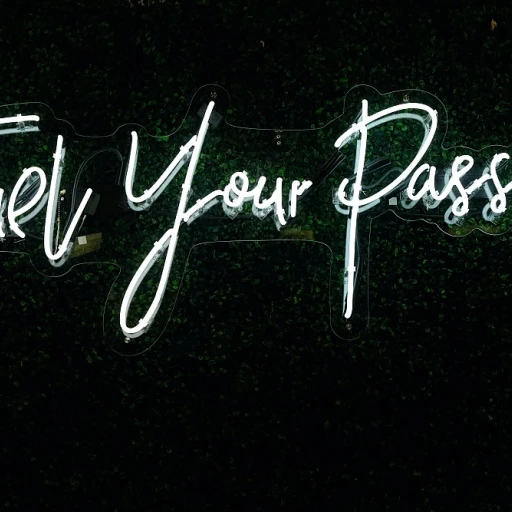The Skills Gap: A Growing Concern
The Impact of an Evolving Workforce
The skills gap has emerged as a pressing challenge for organizations across various sectors. As industries evolve and technological advancements accelerate, the demand for new skills has significantly increased. However, many employers find it difficult to source candidates who can meet these demands. This phenomenon is not just limited to technical or hard skills, but also extends to soft skills such as communication, problem-solving, and adaptability. As such, understanding how to bridge this gap is crucial for both employers and job seekers.
One significant step forward has been the use of behavioral assessments in recruitment. These assessments offer a functional way to identify not just existing competencies, but potential for growth. Behavioral assessments help to pinpoint target behaviors and skills that are pivotal in today’s dynamic workplaces. Data collected from these assessments can highlight both functional skills and areas where intervention might be needed. This is particularly valuable when assessing soft skills that are often more challenging to measure through traditional methods.
As behavior occurs in various forms, service providers must employ a flexible assessment process. This includes both direct observation and indirect assessment methods to capture comprehensive data. For employers seeking solutions to the skills gap, implementing these assessment methods can serve as an effective strategy. Moreover, they enable the identification of interfering behaviors that might pose challenges in an otherwise capable candidate.
To further understand the shift towards this innovative approach, exploring effective mentorship programs offers insight into supporting adults in developing competencies that align with current demands. Through a strategic, data-driven approach, organizations can begin bridging the skills gap with greater precision and impact.
Utilizing Behavioral Assessments for Skills Analysis
Behavioral assessment has become a pivotal tool in bridging the skills gap. It allows organizations to analyze and evaluate both hard and soft skills by observing behaviors in specific contexts. This data-driven approach is instrumental in identifying challenges that traditional assessments may overlook.
Unlike typical methods, behavioral assessments focus on behaviors as they occur in real-time situations. For instance, through this method, assessing functional behaviors in the workplace or during interviews can highlight the underlying problem behaviors or skill deficiencies that need addressing.
One of the critical components of this process is the collection and analysis of ABC data, which stands for Antecedent, Behavior, and Consequence. This helps in constructing a comprehensive profile of the target behavior in question. By understanding why a behavior occurs, one can implement targeted interventions to enhance required skills.
Behavioral assessments offer significant value in identifying soft skills, which are increasingly recognized as crucial in modern job markets. From decision-making to effective communication, these skills can often determine a candidate's success.
Moreover, behavioral assessments enable a structured assessment process where interventions can be evaluated over time. By setting a plan with clear objectives, service providers can monitor progress and make necessary adjustments, thereby minimizing the occurrence of interfering behaviors.
In this evolving field, functional behavior analysis (FBA) continues to play a crucial role. FBA provides insights into the function of specific behaviors, allowing interventions to target specific skill gaps more precisely.
For those interested in exploring how these contemporary methods are shaping the future of workforce development, particularly in mentorship programs for adults, visiting
bridging the skills gap effectively offers pertinent insights.
Identifying Soft Skills Through Behavioral Assessment
Unveiling Soft Skills Through Targeted Behavioral Analysis
Understanding the complex nature of soft skills requires a well-defined approach. Behavioral assessments play a pivotal role in this process by leveraging various methods to identify these often-overlooked competencies. The implementation of functional behavior assessments (FBAs), for example, is a critical step in capturing the nuances of individual behaviors.
First and foremost, assessments allow for the collection of data which details how target behaviors manifest in the workplace. These assessments serve as an intervention by identifying which behaviors are functional and align with the organizational goals, and which are considered interfering or challenging. By examining the context and frequency with which certain behaviors occur, service providers can better plan and implement strategies to enhance the workforce's effectiveness.
Key to this process is employing both direct and indirect assessment methods. Direct assessments provide concrete data collected during the observation of behaviors as they occur, while indirect assessments offer insights through interviews or questionnaires. Both types are essential in forming a comprehensive view of an individual's behavior.
Crucially, ABC data (Antecedent, Behavior, Consequence) helps identify the triggers and outcomes of target behaviors. This data aids in understanding the function of problem behaviors, helping organizations create tailored plans to address and mitigate these issues. By aligning assessments with the goals of workforce development, companies can bridge the skills gap more effectively.
Behavioral assessments not only diagnose current gaps in skills but also illuminate pathways for growth, ensuring that the workforce is both competent and adaptable in a rapidly changing environment. For a deeper dive into methodologies for closing skills gaps, consider exploring the
Dreyfus Model as a resource for enhancing workforce capability.
Implementing Behavioral Assessment in Recruitment
Practical Steps for Implementing Behavioral Assessment in Hiring
When addressing the skills gap in recruitment, implementing a behavioral assessment becomes a crucial component. Companies can optimize their hiring process by following specific steps, ensuring they bring in talent that aligns with their organizational goals.
Firstly, identifying target behaviors is essential. Service providers often focus on functional behaviors that align with desired job roles. Understanding the skills necessary for a position will guide what behavior assessments should target, ensuring relevant data collection that informs decision-making.
The assessment process involves both direct and indirect methods. Direct assessments, such as Functional Behavior Analysis (FBA), provide in-depth insights. They help identify challenging and interfering behaviors that may occur during workplace tasks. Meanwhile, indirect assessment approaches can gather information on past behaviors and performance, further complementing the assessment strategy.
Data collection is crucial. Utilizing ABC data (Antecedent, Behavior, Consequence) methods allows HR to capture the context in which behaviors occur. This comprehensive approach helps pinpoint potential problem behaviors that could hinder job performance.
Implementing an intervention plan is a vital step post-assessment. By focusing on the primary function of assessed behaviors, organizations can establish strategies to foster functional behavior development. Regularly reviewing the data collected helps refine these plans, ensuring they remain effective over time.
In conclusion, the behavioral assessment in recruitment not only bridges the skills gap but also strategically enhances the workforce. By understanding and targeting appropriate behaviors, companies can improve their recruitment efforts and build a more capable, adaptive team.
Case Studies: Success Stories in Bridging the Skills Gap
Real-World Success Stories
The practical application of behavioral assessment in addressing the skills gap is already yielding impressive results across various industries. Employers are gradually recognizing the potential of these assessments to transform recruitment and employee development processes.
One example is a technology firm that integrated behavioral assessment to identify target behaviors crucial to their team dynamics. By focusing on both technical expertise and soft skills, they successfully built a more collaborative workforce. The assessment process involved collecting abc data to analyze functional behavior, allowing the team to tailor interventions that minimize interfering behaviors.
In another case, a service provider in the healthcare sector utilized indirect assessment methods to better understand their employees' functional skills. The data collected revealed challenging behaviors often went unnoticed, impacting overall productivity. By implementing a strategic development plan, behaviors that were previously seen as problematic were viewed through a new lens, promoting growth and reducing skill gaps.
A notable success occurred in the education field, where a comprehensive assessment fba was conducted. By analyzing the function of problematic behaviors, educational institutions tailored support programs to enhance teacher engagement and student outcomes. The targeted interventions not only supported professional growth but also created a positive learning environment.
The implementation of these methods highlights a crucial step toward addressing the skills gap in diverse sectors. As these behavioral assessments continue to evolve, they promise to play an essential role in promoting workforce development and ensuring that skills align more closely with organizational objectives.
Future Trends: The Role of Behavioral Assessment in Workforce Development
Emerging Trends in Behavioral Assessment for Workforce Development
The role of behavioral assessment in workforce development continues to evolve as technological advancements and changing workforce dynamics demand more effective strategies. Recognizing a skill gap is only the first step; understanding the behavior that influences this gap requires a more detailed approach.
Behavior assessments are expanding beyond traditional recruitment processes. Service providers now integrate functional behavior assessments (FBA) and analysis methods such as ABC data collection, which scrutinizes the antecedents, behaviors, and consequences of particular actions. This allows HR professionals to project the alignment of a candidate’s behavior with organizational goals by targeting specific behavioral competencies.
An emphasis is placed on real-time data collected through digital platforms. This allows for continuous monitoring of employee development and identification of any challenging behaviors or interfering behaviors that might arise within teams. As organizations strive for agility, data-driven insights into behaviors help in crafting better intervention plans and training initiatives.
Moreover, as remote work becomes more prevalent, online behavioral assessments provide an ability to assess and develop soft skills cross-nationally. This trend indicates a shift from static assessments toward dynamic, ongoing engagement with employees.
Finally, the developmental focus is shifting towards creating resilient teams capable of self-assessment and peer evaluation. By fostering an environment where indirect assessment is encouraged, organizations can mitigate problem behavior before it escalates. The ability to self-monitor and adjust behaviors in alignment with company values is becoming a significant marker of workforce readiness.
As we look to the future, behavioral assessment will undoubtedly remain a cornerstone of addressing the skills gap, driving innovation in function-focused training methods that prepare the workforce for rapid changes in the global economy.













